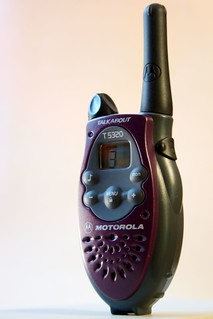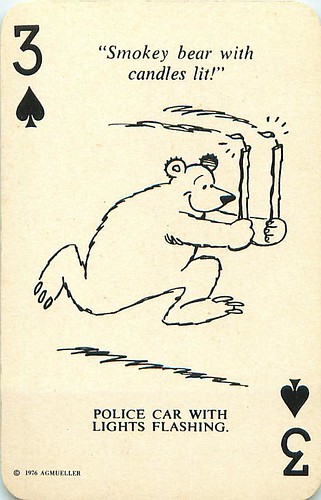 |
| midnightcom on flickr.com |
Friends of ours were using FRS radios when traveling by RV through Portland, Oregon. One of the parties took a wrong freeway ramp, signal dropped out, and it was hours before they got back together.
Other RVers swear by CB (Citizens Band) radio. Years ago, there was a phase where it seemed like everyone wanted to have a CB in their car and talk like a trucker. That was before cell phones became a practical reality. But when cell phones hit, for most CB radios were relegated to the garage sale pile.
A CB will allow you to communicate a few miles with other equipped users. That beats the daylights out of the FRS short-distance fall off. But FRS does have an advantage. With a CB radio, you hear other users, and sometimes the language isn't pretty. FRS radios can be selectively set to allow you to hear the signals of another user set to the same "code." When your buddy with the same code "keys up" or begins to transmit, you'll hear them. Don't mistake this for privacy--other people can hear you, so watch what you talk about.
 |
| andertoons on flickr.com |
If you have a CB radio in your rig and leave it on (or "monitor the frequency") you may find it helpful. Say you're RVing down the road and a basement storage door on your rig comes open. A passing driver equipped with CB sees your door flapping and warns you of the problem by radio. They can only do this if they know what channel you monitor; so if you choose to have your radio on, put a sign up in your rig's rear window with the channel number printed on it. Some pick an "off" channel (something other than 19) for their primary channel to monitor, then switch over to Channel 19 if they see a knot of traffic up ahead -- no doubt the truckers will be talking about it.
The "squelch" control on a CB radio allows you to selectively make your CB a little more hard of hearing. Turn the squelch down, you'll hear static noises and a garble of voices. Turn it up, you can tune out the static. Turn it up more, you can deaden the transmissions of all but drivers who are close to you -- like the one that might tell you that you forgot to lower your TV antenna.
CB radios are relatively inexpensive, but they do need a vehicle mounted antenna. If you're handy with tools and running wire, you can probably install an antenna yourself. Some are magnetically mounted and will stick to the roof of your pickup truck. Your motorhome may be a bit trickier to stick an antenna on, but check out Radio Shack stores, or visit the convenience store at a big truck stop and you'll find a huge array of both radios and antennas. You'll sometimes find a CB radio specialist's shop at some truck stops.
Other possibilities for radio communications? Ham (Amateur) radio is another possibility. There are many RV-Ham groups in existence. Ham radio requires licensing, and is a bit more expensive, but it's a whole new world and hobby.
Photos: CB radio--cubwolf (Dave Smith) FRS radio--midnightcomm. Both on flickr.com
I would like to add that a number of RVers are trying to use channel 13 as a channel to monitor when travelling. I have a sticker on my MH. Monitored 13 summer of 2014, round trip from MD To SD with no contact. But I will continue to monitor.
ReplyDeleteI've been using CBs since 1971 and although they have limits they are still a great tool, especially when travelling with another RV. For all the information you could ever need see www.firestik.com/Tech_Docs.htm
ReplyDeleteI guard 146.52 the 2 meter calling frequency while traveling. I'm finding more and more hams now that the licensing has been made REALLY simple and 5 watt dual band handheld radios can be had for as low as 40 dollars.
ReplyDeleteI remember, in the '50s, my grandpa being a ham radio operator and using Morse Code (at which he was very fast). His call letters (or whatever they're called) were K7SD.
ReplyDeleteDiane from RVtravel.com
Installed a CB in our rig specifically for our trip to Alaska this past summer (2014) and hardly ever heard anyone on 19 at all all summer long. Needless to say, I was very surprised since the last time I'd had a CB in one of my vehicles was when they were all the rage and the FCC gave up trying to send out licenses to all the applicants. Even when I'd try calling a trucker to alert him to a low inside tire on his rig I got no reply. So what are the truckers using? Obviously, cell phones are only useful from truck to truck if you know the guy's phone number.
ReplyDelete